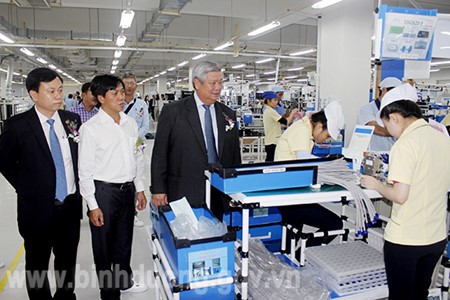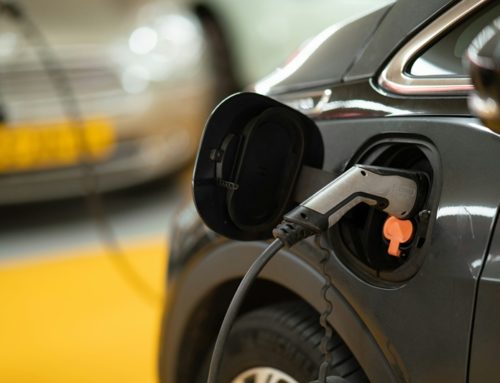1. Foreign Direct Investment from the Gulf Cooperation Council into Africa: A New Era of Economic Partnership
In the 21st century world the economic landscape is continually evolving. One of the most significant trends of recent years has been the surge in Foreign Direct Investment (FDI) from the Gulf Cooperation Council (GCC) countries into Africa. This article explores this burgeoning economic relationship, shedding light on the motivations behind the investments, the sectors targeted, and the implications for both the GCC and Africa.
The GCC, comprising Bahrain, Kuwait, Oman, Qatar, Saudi Arabia, and the United Arab Emirates, has emerged as a powerful economic bloc with significant investment potential. Meanwhile, Africa, with its vast resources and emerging markets, presents attractive investment opportunities. The convergence of these factors has led to a remarkable increase in FDI flows from the GCC to Africa, signaling a new era of South-South cooperation.
This article delves into the intricacies of this economic phenomenon, providing a comprehensive analysis of the trends, challenges, and prospects of GCC’s FDI into Africa. Join us as we navigate through this fascinating journey of economic discovery.
Examples
Examples of Foreign Direct Investment (FDI) from the Gulf Cooperation Council (GCC) into Africa:
1. Green Hydrogen Projects:
Companies based in GCC countries announced 73 FDI projects in Africa worth more than $53bn last year. More than 90% of this FDI came from the UAE and Saudi Arabia, most notably into hydrogen and other renewable energy projects. For instance, Saudi Arabia-based ACWA Power signed a framework agreement to develop a green hydrogen project in the Suez Canal Economic Zone in Egypt, investing more than $4bn into the project.
2. Infrastructure Development:
GCC’s FDI in Africa also includes infrastructure development such as ports, warehouses, and data centres.
3. Solar Energy:
ACWA Power will also invest $800m to establish a new 442-megawatt solar park in the Northern Cape region of South Africa.
4. Agricultural Investments:
Saudi Arabia is the top investor in agriculture in Africa, conducting large-scale investments such as its purchase of 500,000 hectares of land in Tanzania in 2009.
The top five destination countries for FDI inflows from the GCC to Africa between 2012 and 2022 are Egypt ($69.8 billion), Morocco ($4.6 billion), Algeria ($3 billion), Nigeria ($2.6 billion), and South Africa ($2.3 billion).
These investments reflect a push by oil-rich Gulf states to diversify away from hydrocarbons and back emerging technologies.
Trends
Foreign Direct Investment from the Gulf Cooperation Council into Africa has been on a significant rise, with the United Arab Emirates (UAE) and Saudi Arabia being the most active investors. Here are some key trends:
1. Renewable Energy:
There’s a strong focus on renewable energy projects, particularly green hydrogen. For instance, Saudi Arabia-based ACWA Power signed a framework agreement to develop a green hydrogen project in the Suez Canal Economic Zone in Egypt.
2. Infrastructure Development:
Infrastructure development such as ports, warehouses, and data centres is another area where GCC’s FDI in Africa is booming.
3. Food Security:
Food security remains a major concern for the region, and GCC states have been exploring agriculture projects in Africa for at least a decade.
4. Diversification:
This surge in FDI reflects a push by oil-rich Gulf states to diversify away from hydrocarbons and back emerging technologies.
5. Bilateral Investment Treaties (BITs):
All GCC States, barring Saudi Arabia, have signed and ratified BITs with African countries, strengthening economic ties while pursuing diversification strategies beyond traditional sectors.
The top five destination countries for FDI inflows from the GCC to Africa between 2012 and 2022 are Egypt, Morocco, Algeria, Nigeria, and South Africa. This trend of increasing FDI from the GCC into Africa signifies a new era of South-South cooperation, with potential benefits for both regions.
2. The UK-Nigeria Economic Partnership: A New Chapter in Bilateral Relations

Pexels Prop Drones
In an era marked by shifting geopolitical alliances and evolving economic landscapes, the recent economic partnership signed between the United Kingdom and Nigeria signifies a pivotal moment in their bilateral relations. This article delves into the intricacies of this landmark agreement, exploring its implications for both nations and the broader global economy.
The United Kingdom, in its post-Brexit phase, has been forging new economic partnerships around the globe. Nigeria, with its robust economy and strategic position in West Africa, presents a compelling partner. The signing of this economic partnership not only strengthens the ties between the two nations but also opens up a plethora of opportunities for trade, investment, and mutual growth.
This article provides an in-depth analysis of the UK-Nigeria economic partnership, examining its key components, potential benefits, and the challenges that lie ahead. Join us as we navigate through this significant development in international economics.
Key components
The key components of the UK-Nigeria Economic Partnership, also known as the Enhanced Trade and Investment Partnership (ETIP), are as follows:
1. Financial and Legal Services:
The partnership focuses on cooperation in financial services and legal services. It will facilitate each other’s lawyers practising foreign and international law in each other’s jurisdictions, which could significantly enhance legal services collaboration and exports.
2. Business Environment:
The agreement aims to create a conducive business environment. This includes coherent and consistent policy making at the federal and state level, reliable and transparent legal and administrative processes, and long-term relationships of trust and cooperation.
3. Film and Media Industry:
The partnership will pave the way for further collaboration in the film and media industry.
4. Education:
The agreement encourages world-leading UK education providers to offer high-quality education in Nigeria.
5. Renewable Energy:
Opportunities in renewable energy are expected to flourish. For instance, the UK energy firm Konexa signed a deal to support Nigeria’s transition to sustainable energy.
6. Trade and Investment:
The partnership is designed to grow the UK and Nigeria’s already thriving trading relationship, which totalled £7 billion in the year to September 2023.
This partnership is the first the UK has signed with an African country, marking a significant milestone in their bilateral relations.
3. The EU’s Carbon Border Adjustment Mechanism (CBAM): A Game Changer for Global Trade

Chris Leboutillier via unsplash
In the face of escalating climate change concerns, the European Union (EU) has introduced a groundbreaking policy – the Carbon Border Adjustment Mechanism (CBAM). This initiative represents a significant shift in global trade dynamics, with far-reaching implications for both EU and non-EU countries. This article aims to demystify the CBAM, exploring its structure, objectives, and potential impact on global trade.
The CBAM is a part of the EU’s ambitious Green Deal, designed to prevent ‘carbon leakage’ – where companies transfer production to countries with less stringent emissions regulations. By levying a charge on the carbon content of imports, the CBAM seeks to level the playing field for EU and non-EU producers, encouraging global decarbonization efforts.
However, the CBAM’s introduction raises several critical questions. How will it affect global trade patterns? What are the implications for developing countries? And could it trigger a new wave of trade disputes? This article delves into these issues, providing a comprehensive analysis of the CBAM and its potential ramifications for the global trading system.
Implications
The Carbon Border Adjustment Mechanism (CBAM) proposed by the European Union (EU) has several implications for developing countries:
1. Change in Trade Patterns:
The introduction of CBAM could result in changes in international trade patterns. Countries with relatively carbon-efficient production processes could see a boost in their exports.
2. Impact on Exports:
The CBAM could potentially affect up to $16 billion of developing country exports to the EU. This is because it applies to the imports of all goods currently covered by the EU’s Emissions Trading System.
3. Risk of Unfair Penalties:
There are concerns that the CBAM could unfairly penalise the exports of developing countries. This is particularly relevant for countries that rely heavily on the EU market.
4. Potential for Cleaner Production Technologies:
The EU could consider using revenue generated by the CBAM to accelerate the diffusion and uptake of cleaner production technologies to developing country producers. This could be beneficial both in terms of greening the economy and fostering a more inclusive trading system.
5. Incentive for Emission Reductions:
While developing countries may gain significantly from global mitigation efforts in the long run, they may have little incentive to undertake costly emission reductions in the short run. The CBAM could potentially incentivize these countries to comply.
It’s important to note that the exact impact of the CBAM on developing countries will depend on various factors, including the specific design of the mechanism, the countries’ economic structures, ad their capacity to adapt to cleaner production processes.
4. East Meets East: The Surge of Japanese Investment in Vietnam

Omron factory Credit Binhduong Province
In the rapidly evolving global economic landscape, one trend that has garnered significant attention is the surge of Japanese foreign investment into Vietnam. This article delves into the intricacies of this economic phenomenon, exploring the motivations behind Japan’s increasing interest in Vietnam, the sectors that are benefiting the most, and the implications for both countries’ economies. As we navigate through the complexities of international finance, we’ll uncover the strategic importance of this East Asian partnership and its potential to reshape the region’s economic future.
Examples
Japanese investment in Vietnam has been increasing significantly across various sectors. Here are some key trends and examples:
1. Processing and Manufacturing Industries:
These sectors have seen the largest concentration of Japanese investment projects in Vietnam, with 1,842 projects and a registered capital of $41.79 billion, accounting for 65.3% of total investment capital.
2. Electricity Production and Distribution:
This sector has attracted 19 projects with $7.4 billion of investment from Japan, accounting for 11.5% of total funds invested.
3. Real Estate:
The real estate industry in Vietnam has also attracted considerable Japanese investment, making up 10.9% of the total investment capital.
4. Non-Manufacturing Industries:
There has been a significant increase in Japanese investment in Vietnam’s non-manufacturing industries, such as retailing, education, healthcare, energy, finance and insurance, transport, and real estate.
5. Harnessing the Wind and Sun: Vietnam’s Clean Energy Revolution Attracts Global Investors

Pexels Sheep
In the global race towards sustainable development, Vietnam is emerging as a front-runner in the clean energy sector. With its ambitious renewable energy goals and strategic geographical location, the country is attracting significant foreign investment, reshaping its energy landscape, and setting a precedent for other developing nations.
Vietnam’s Clean Energy Potential
Vietnam’s commitment to a green future is evident in its Power Development Plan VIII (PDP8), which sets ambitious renewable energy goals for 2030. The country is naturally suited to develop wind and solar energy, with a technical potential of 1,000 gigawatts (GW). This immense opportunity for renewable capacity was explored in a 2019 article.
Challenges and Opportunities
Despite the potential, Vietnam’s renewable energy projects are not consistently bankable at present, held back by regulations and the market. However, current market conditions present the country’s energy sector with a unique opportunity. Many manufacturers are avoiding investing solely in China by diversifying into neighbouring countries to mitigate geopolitical risk, including into Vietnam.
Attracting Foreign Investment
To meet its goal of net-zero emissions by 2050, Vietnam needs to massively increase its renewable energy capacity, particularly solar and wind. This will require substantial investment. Most renewable energy projects in Vietnam have been developed by domestic companies. However, achieving net-zero can only be achieved if Vietnam mobilizes international funding.
The Road Ahead
Vietnam’s clean energy sector is at a pivotal juncture. The country’s ability to attract foreign investment will be crucial in determining the pace and scale of its energy transition. As Vietnam embarks on this journey, the world watches with keen interest, recognizing that the lessons learned here could hold valuable insights for other nations navigating their own paths to a sustainable future.
Examples
Vietnam has been making significant strides in the clean energy sector. Here are some examples of clean energy projects in the country:
1. Trung Son Hydropower Plant:
Since becoming operational in 2017, the new 260-megawatt (MW) grid-connected Trung Son hydropower plant has supplied on average 1 billion kilowatt-hours (kWh) of electricity annually at a unit cost lower than power generated by other renewable sources or by coal.
2. USAID Vietnam Low Emission Energy Program (V-LEEP II):
This program supports Vietnam’s transition to a clean, secure, and market-based energy sector.
3. USAID Vietnam Urban Energy Security:
This project works closely with the Government of Vietnam to catalyse clean energy solutions to urban energy challenges.
These projects, among others, demonstrate Vietnam’s commitment to renewable energy and its efforts to attract foreign investment in this sector. However, it’s important to note that while these projects are promising, Vietnam still faces challenges in terms of regulations and market conditions. Despite these challenges, the country’s immense potential for renewable energy makes it an attractive destination for foreign investors.
Featured image Image Harshil Gudka via unsplash







